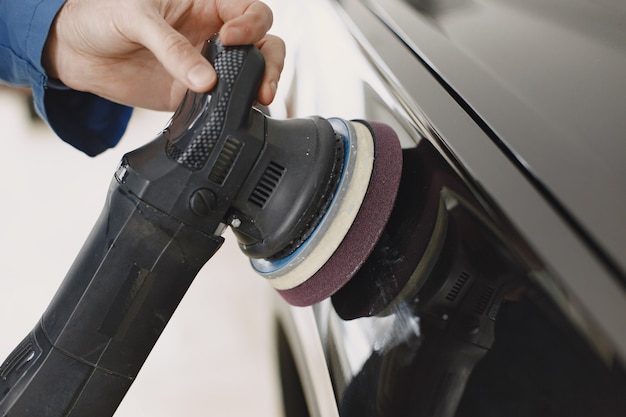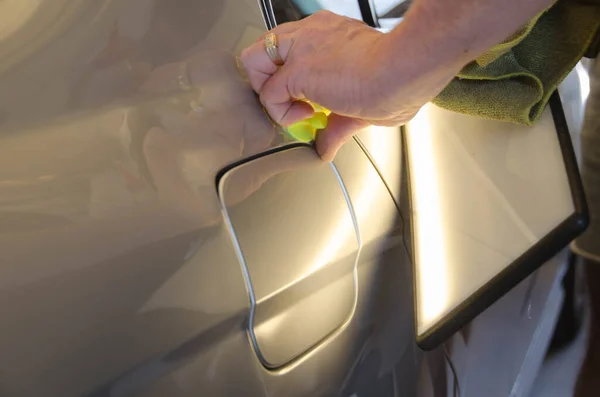From Hailstorms To Parking Lot Mishaps: How Paintless Dent Repair Handles Different Types Of Damage
In the world of automotive aesthetics, dents and dings are an unfortunate reality. From hailstorms pelting vehicles with icy projectiles to parking lot mishaps resulting from careless maneuvers, these imperfections can be both frustrating and unsightly for car owners. However, thanks to advancements in automotive technology, there's a solution that's both efficient and effective: paintless dent repair (PDR).
This innovative technique has revolutionized the way we approach dent removal, offering a faster, more cost-effective alternative to traditional methods. In this article, we'll explore how paintless dent repair addresses various types of damage, from the aftermath of hailstorms to minor parking lot dings.
Understanding Paintless Dent Repair (PDR)
Paintless dent repair is a method of removing dents from a vehicle's body without the need for sanding, filling, or repainting. Instead, skilled technicians use specialized tools to gently massage the metal back into its original shape, preserving the integrity of the factory finish. This process is not only faster than traditional dent repair methods but also more environmentally friendly, as it eliminates the need for harmful chemicals and reduces waste.

The Role of Skilled Technicians
At the heart of paintless dent repair is the expertise of trained technicians. These professionals undergo rigorous training to develop the precision and finesse required to manipulate metal panels effectively. By carefully assessing each dent's size, depth, and location, technicians can determine the best approach for restoring the damaged area without compromising the vehicle's structural integrity.
How Paintless Dent Repair Handles Different Types of Damage
Paintless Dent Repair (PDR) has become the go-to solution for addressing a variety of damage types on vehicles. This innovative technique offers numerous advantages over traditional dent repair methods, providing efficient and effective results without the need for extensive bodywork or repainting. Here's how paintless dent repair handles different types of damage:
Hail Damage:
Hailstorms can wreak havoc on vehicles, leaving behind countless dents across the body panels. Paintless dent repair is particularly well-suited for hail damage due to its ability to efficiently address multiple dents without the need for filler or repainting. Skilled technicians use specialized tools to gently massage the metal back into its original shape, restoring the vehicle's appearance with minimal downtime.

Door Dings and Minor Dents:
Parking lot mishaps, such as door dings and minor dents, are common occurrences that can detract from a vehicle's appearance. Paintless dent repair offers a convenient and cost-effective solution for addressing these imperfections. Technicians can access the damaged area from behind the panel and carefully manipulate the metal back into place, effectively erasing signs of impact without the need for sanding or painting.
Creases and Larger Dents:
While paintless dent repair is highly effective for shallow dents, it can also handle more substantial damage, including creases and larger dents. Skilled technicians utilize a combination of specialized tools and techniques to gradually reshape the metal, working meticulously to ensure a seamless repair. While more extensive damage may require additional time and expertise, paintless dent repair can still offer significant time and cost savings compared to traditional methods.
Paintless Dent Repair Limitations:
While paintless dent repair is incredibly versatile, there are limitations to its effectiveness. Severe damage that has caused stretching or tearing of the metal may require traditional repair methods to achieve optimal results. Additionally, certain factors such as the location of the dent, access to the damaged area, and the type of metal may impact the feasibility of paintless dent repair.
Navigating Parking Lot Mishaps with Care
- Mindful Parking: When navigating parking lots, it's essential to park mindfully to avoid potential mishaps. Choose a spot away from high-traffic areas, where the risk of door dings and other accidents is lower. Additionally, be mindful of neighboring vehicles and park within the designated lines to maximize space and minimize the risk of collisions.
- Door Opening Awareness: Before opening your car door, take a moment to assess your surroundings. Look for nearby vehicles, pedestrians, or obstacles that could be impacted by your door swinging open. Taking this extra step can help prevent door dings and ensure the safety of those around you. For more details on Paintless Dent Repair near me, simply click here.
- Avoiding Tight Spaces: While it may be tempting to squeeze into a tight parking space, doing so increases the likelihood of dings and scratches to your vehicle. Instead, opt for a larger space that allows for easier maneuverability and reduces the risk of accidental collisions with neighboring vehicles or obstacles.
- Patience and Caution: Practice patience and caution when navigating parking lots, especially during peak hours or busy shopping periods. Drive at a safe speed, remain alert, and be prepared to yield to pedestrians and other drivers. By exercising caution and patience, you can minimize the risk of accidents and protect your vehicle from unnecessary damage.
- Utilize Parking Aids: Many modern vehicles come equipped with parking aids such as rear view cameras, parking sensors, and parking assist systems. Utilize these tools to help you navigate parking lots more safely and accurately. Pay attention to any warnings or alerts provided by these systems to avoid potential collisions or accidents.
- Regular Inspections: Conduct regular inspections of your vehicle for any signs of damage or wear and tear resulting from parking lot mishaps. Look for dents, scratches, or other imperfections that may require attention. Addressing minor issues promptly can prevent them from worsening over time and potentially save you money on repairs in the long run.

